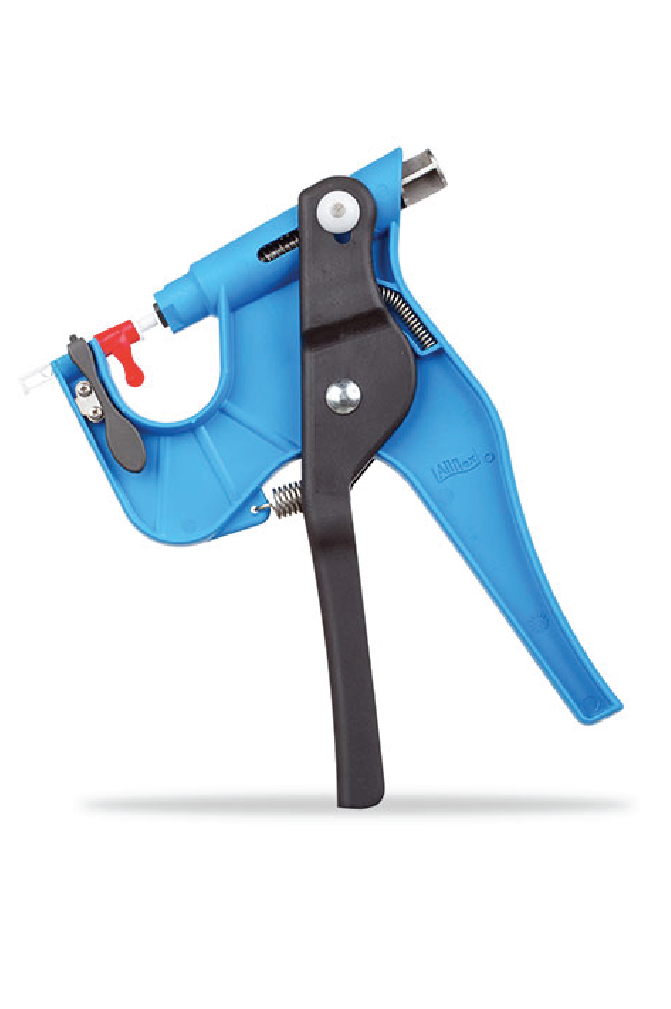DNA collection brings value to cattle producers
By Scott Holt
Genomic testing is a growing practice in beef herd improvement, bringing cattle producers opportunities to manage breeding outcomes, elevate calf quality and increase reproductive efficiency.
It’s like 23&Me for cattle, where progressive producers can look into important pedigree and breed backgrounds, and assess key production, maternal and carcass traits.
As an enabling technology, Allflex Tissue Sampling Units (TSU) make DNA collection faster, cleaner and easier than blood drops or hair follicles, which are messy and easily cross contaminated.
Allflex Tissue Sampling Units involve the deposit of a small ear punch into a vial, which seals the tissue in a liquid preservative and identifies it with a unique barcode. It takes mere seconds at chute side.

DNA labs handle TSUs robotically, speeding test result turnaround and increasing reliability.
On the farm or ranch, the best times to collect DNA samples are between birth and three months of age. By profiling cattle early, producers can sort them into replacement heifer or feeder calf groups sooner. Other times to collect samples are during cattle vaccination or when separating replacement heifers at weaning.
After tissue sample collection, producers have many DNA test options, including:
- Parentage verification. Sire parentage will verify which bulls sire the best calves and those that are being pushed aside by more dominant bulls, as well as pinpoint bulls that are infertile or lack libido. Labs need sire and calf DNA to verify parentage.
- Genetic health. Genetic tests help producers identify defect carriers and breed them to non-carriers. This helps producers breed defects out of the herd as well as reduce death loss or aborted fetuses.
- Genomic profiling. Commercial cattle producers use DNA profiling to rate, rank and select replacement heifers based on maternal, production and carcass traits. Profiling the cow herd also helps pick out traits desired from new bulls or semen.
- Seedstock EPDs. Seedstock breeders obtain EPDs for cows, donor dams, bull calves and heifers. By sending tissue samples to breed associations, DNA data facilitates genomically enhanced EPDs for greater accuracy in progeny predictions, particularly for yearling bulls.
- Heterosis in crossbreds. New tools assess heterosis in crossbred replacement heifers. Heterosis strongly influences reproduction, wellness and growth, helping cow-calf producers fill their herd with productive, efficient F1 cows.
- Feedlot qualities. New DNA indexes rank feedlot cattle on carcass and terminal traits. The data can help in sorting feeder cattle, selecting cattle for retained ownership in the finishing phase or raising beef for direct sale to consumers.
- Persistent disease carriers. Tissue samples also are preferred for screening calves for persistent infection with bovine viral diarrhea virus (BVDV). Culling these calves reduces herd losses from sickness, abortions and death.
- Further resources. Visit the Beef Improvement Federation website for the latest papers on genomics and beef cattle production.
Find more content for your beef operation.
About the author

Scott Holt
Associate Director of Marketing, North America Identification,
Allflex Livestock Intelligence
